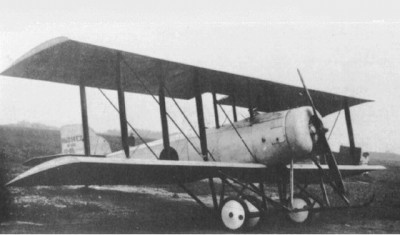| Název: Name: | Micubiši typ Ki 1 (Hanriot HD-14) | Mitsubishi Army Type Ki 1 Trainer |
| Originální název: Original Name: | 三菱型キ1 练习机 | |
| Kategorie: Category: | cvičný letoun | trainer aeroplane |
| Výrobce: Producer: | DD.03.1924-DD.04.1927 Mitsubishi Internal Combustion Engine Manufacturing Co., Ltd., Nagoya | |
| Období výroby: Production Period: | DD.03.1924-DD.04.1927 | |
| Vyrobeno kusů: Number of Produced: | 145 | |
| První vzlet: Maiden Flight: | DD.03.1924 | |
| Osádka: Crew: | 2 | |
| Základní charakteristika: Basic Characteristics: | ||
| Vzlet a přistání: Take-off and Landing: | CTOL - konvenční vzlet a přistání | CTOL - conventional take-off and landing |
| Uspořádání křídla: Arrangement of Wing: | dvouplošník | biplane |
| Uspořádání letounu: Aircraft Concept: | klasické | conventional |
| Podvozek: Undercarriage: | pevný | fixed |
| Přistávací zařízení: Landing Gear: | kola | wheels |
| Technické údaje: Technical Data: | ||
| Hmotnost prázdného letounu: Empty Weight: | 550 kg | 1212 lb |
| Vzletová hmotnost: Take-off Weight: | 800 kg | 1763 lb |
| Maximální vzletová hmotnost: Maximum Take-off Weight: | ? kg | ? lb |
| Rozpětí: Wingspan: | 10,260 m | 33ft 8in |
| Délka: Length: | 7,130 m | 23ft 4,75in |
| Výška: Height: | 3,050 m | 10ft |
| Plocha křídla: Wing Area: | 34.50 m2 | 371,367 ft2 |
| Plošné zatížení: Wing Loading: | 23,10 kg/m2 | 4.73 lb/ft2 |
| Pohon: Propulsion: | ||
| Kategorie: Category: | pístový | piston |
| Počet motorů: Number of Engines: | 1 | |
| Typ: Type: | Le Rhône 9 vzduchem chlazený, devítiválcový, hvězdicový, rotační motor o výkonu 58,8 - 74 kW (80-100 k). Vrtule dvoulistá dřevěná Merville-type. | Le Rhône 9 nine-cylinder air-cooled rotary engine rated at 79 to 99 hp, driving a Merville-type two-bladed wooden propeller. |
| Objem palivových nádrží: Fuel Tank Capacity: | ? | ? |
| Výkony: Performance: | ||
| Maximální rychlost: Maximum Speed: | 116 km/h v 2000 m | 72 mph in 6562 ft |
| Cestovní rychlost: Cruise Speed: | 80.5 km/h v 1500 m | 50 mph in 4921 ft |
| Rychlost stoupání: Climb Rate: | ? m/s | ? ft/min |
| Čas výstupu na výšku: Time to Climb to: | 15,0 min do 2000 m | 15,0 min to 6562 ft |
| Operační dostup: Service Ceiling: | 4000 m | 13123 ft |
| Dolet: Range: | 180 km | 111.8 mi |
| Maximální dolet: Maximum Range: | ? km | ? mi |
| Výzbroj: Armament: | žádná | None |
| Uživatelské státy: User States: | | |
| Poznámka: Note: | Micubiši armádní cvičný letoun Typ Ki 1 - japonská licenční výroba Hanriotu HD-14. Označení Ki 1 není označení v systému Kitai, je to znak kandži a Ki 1 znamená Hanriot 1. Japonské armádní letectvo zakoupilo několik francouzských letounů Hanriot HD-14 a po jejich vyzkoušení přijalo rozhodnutí, že je zařadí do své výzbroje jako cvičný letoun. Považovalo je za vhodnější než typ Nieuport 81-E2, které mělo ve své výzbroji pod označením typ Ko 1 v počtu 57 ks. V únoru 1923 byla do Francie vyslána skupina pěti inženýrů, které vedl Tošinori Sakurai. Tito konstruktéři získali zkušenosti se stavbou Hanriotů a po jejich návratu byl v březnu 1924 dokončen první japonský letoun. Japonský typ Ki 1 byl téměř přesnou kopií francouzského stroje, Japonci provedli několik málo podstatných změn. Armádní letectvo bylo s letouny Ki 1 spokojeno a ve službě je nahradil modernější cvičný letoun Tačikawa Ki-17 Cedar. Ki 1 byl posledním japonským letounem, který byl poháněn rotačním motorem. | Mitsubishi Army Type Ki 1 Trainer, the Japanese-built Hanriot HD-14. This is not a Kitai numher but a kanji latter, Ki was assigned to Hanriot aircraft. Rikugun Koku Hombu purchased one or more examples of the French Hanriot HD-14, the Japanese Army considered these to be more suitable as primary trainers than the existing Ko 1. Because of this, Mitsubishi acquired the manufacturing rights for the HD-14 in February 1923. Mitsubishi sent Toshinori Sakurai and four other engineers to France to learn first-hand about the construction of the aeroplane. The first Mitsubishi-built aeroplane was completed in March 1924. Fully satisfied with the result, the Army adapted it as its standard trainer, with the designation of Ki 1. The aeroplane s almost an exact copy of the HD-14 with the exception certain internal systems. It had good flying characteristics and was stable with power on and power off. As a replacement for the Type Ko 1 in 1924, it remained in service until replaced by the Tachikawa Type 95-3 (Allied code-name Cedar) in 1935. This was the last trainer aircraft to be powered with a rotary engine. |
| Zdroje: Sources: | Robert C. Mikesh and Shorzoe Abe, Japanese Aircraft 1910-1941, Naval Institute Press Annapolis, Maryland 21402, 1990, ISBN: 1-155750-563-2 Andrzej Morgała, Samoloty wojskowe w Polsce 1924-1939, Warsawa, Bellona. ISBN 83-11-09319-9. archiv autora | |
| Period | - |
| Producer | - |
| Type | - |
| Camouflage | - |
| Country | - |
| Pilot | - |
| Production No. | - |
| Serial No. / Evidence No. | - |
| Tactical Marking / Imatriculation | - |
| Name | - |
| Unit | - |
| Base | - |
| Date (DD.MM.RRRR) | DD.MM.RRRR |
| Author | - |
| Print size / 300 DPI | - |
| Published with authors permit | - |
| Author Website | - |
